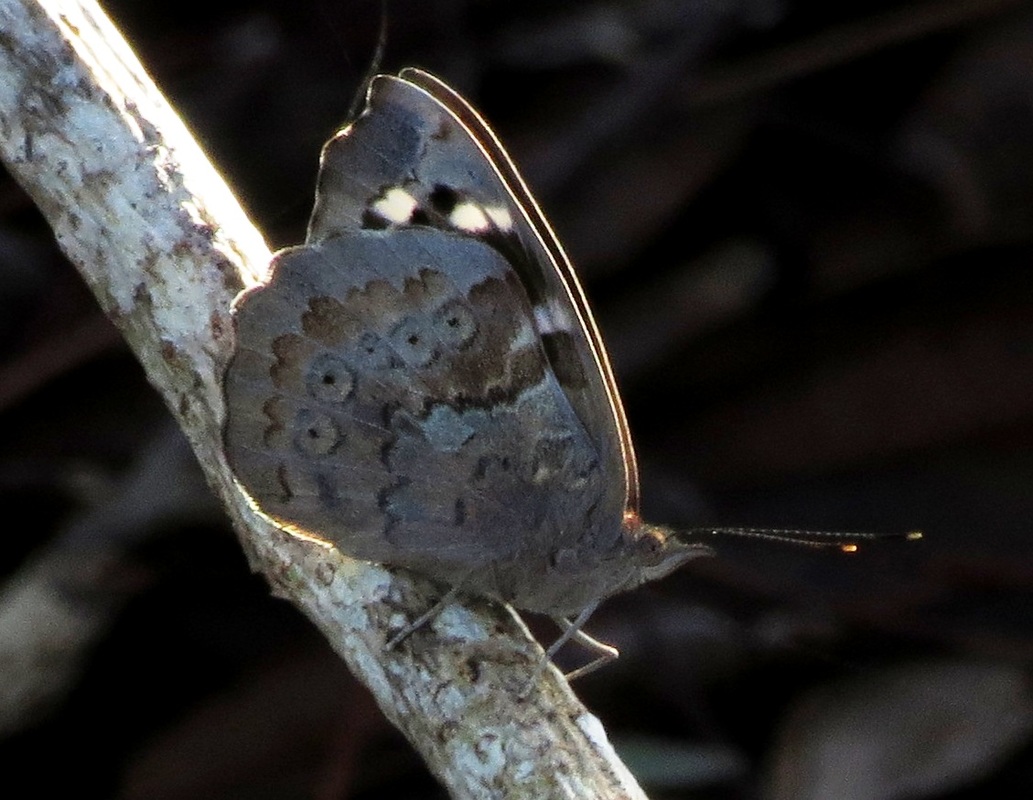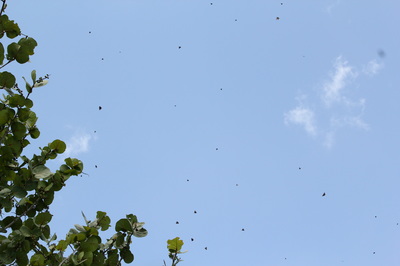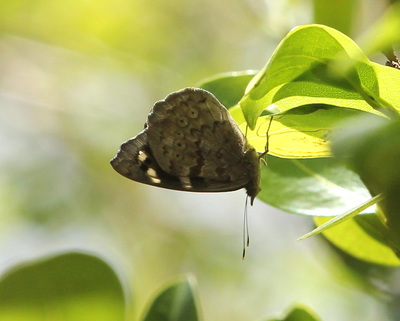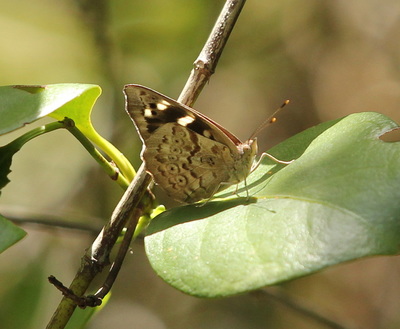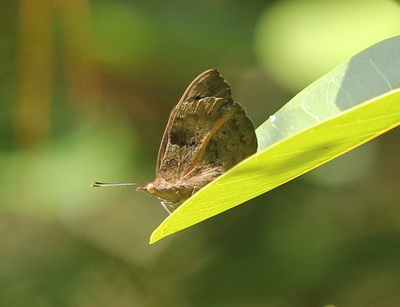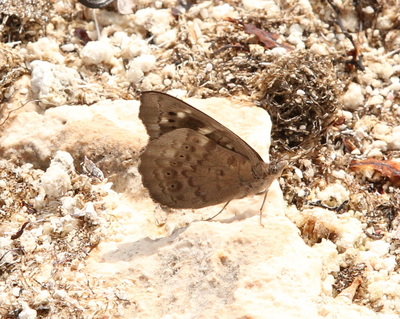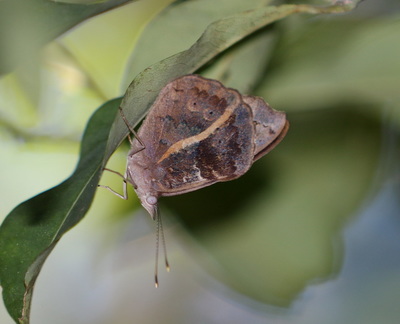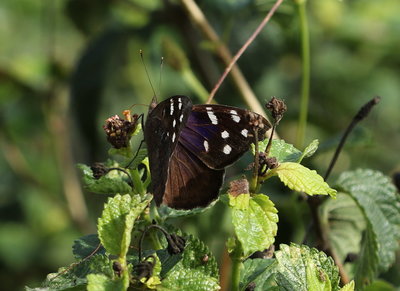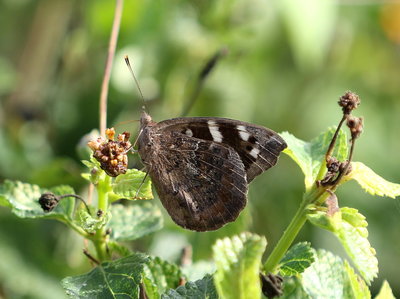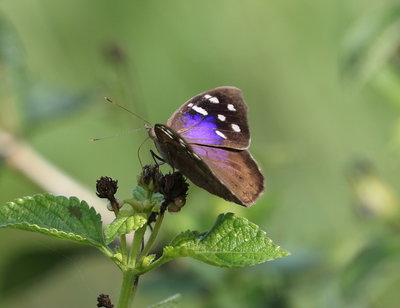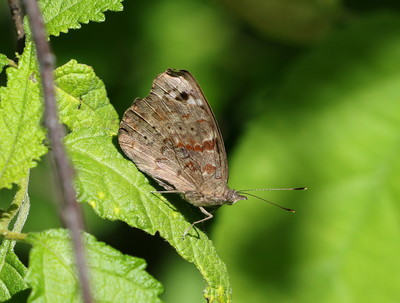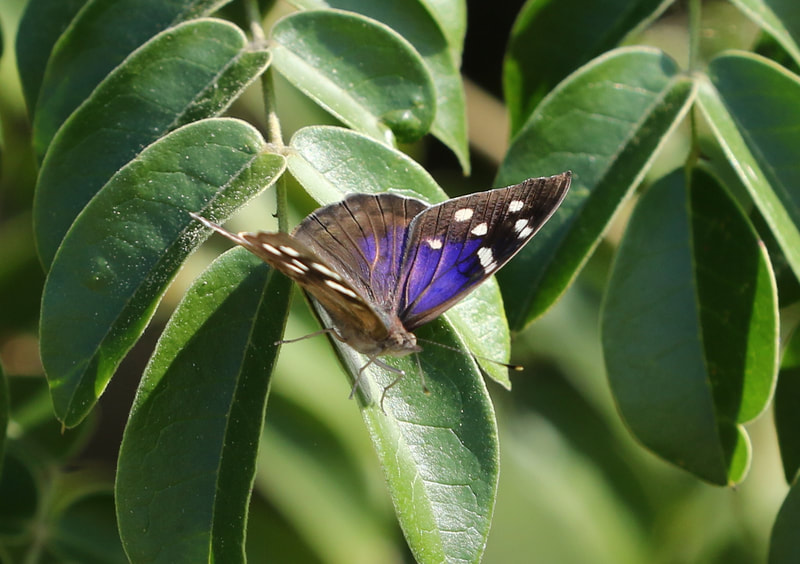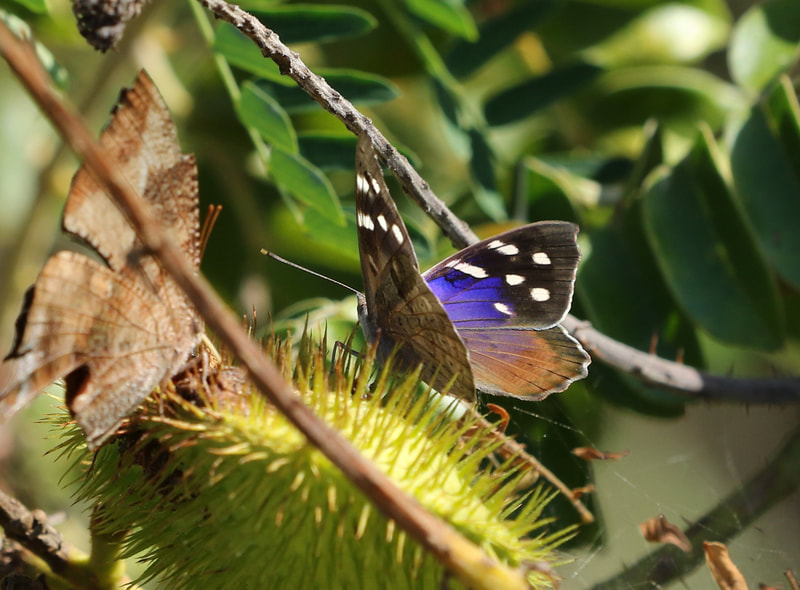Nymphalidae : Biblidinae
Eunica tatila Kaye, 1926
Florida Purplewing
Eunica tatila Kaye, 1926
Florida Purplewing
Description and Similar Species: Wingspan 44-62mm. Dark with a purple sheen on the upperwings with white spots on the forewings. Sexes similar. The main confusion species is the very similar Dingy Purplewing Eunica monima which is on average slightly smaller (but there is considerable overlap). E. tatila has a curved row of six circular eyespots across the centre under-hindwing whereas E. monima has just four with the anterior two merged into one oval shape.
Range: Southern Florida and Central America south to Argentina and the Greater Antilles.
Status: Usually uncommon in Cuba but it has great powers of dispersion and has sometimes been recorded in huge numbers as a result of immigration from Mexico as in June 2015 (see photos below and blog for 22 June 2015). In spring 1939 very large numbers were seen around Santiago de Cuba in the east, dwindling over a period of two months (Smith, Miller & Miller, 1994). Inhabits dense dry forest.
Nectar Plants: Varronia globosa, Lantana, Solanum, Cordia sp and is also attracted to rotten fruit and takes moisture and salts on damp ground.
Larval Foodplants: Unknown in Cuba but Smith, Miller & Miller (1994) mentioned that in southern Florida it has been reared on an introduced vine Jasminum fluminense (Oleaceae), a jasmine native to Asia. Minno & Emmel (1993) mentioned Crabwood Gymnanthes lucida (Euphorbiaceae) as host for southern Florida populations.
Range: Southern Florida and Central America south to Argentina and the Greater Antilles.
Status: Usually uncommon in Cuba but it has great powers of dispersion and has sometimes been recorded in huge numbers as a result of immigration from Mexico as in June 2015 (see photos below and blog for 22 June 2015). In spring 1939 very large numbers were seen around Santiago de Cuba in the east, dwindling over a period of two months (Smith, Miller & Miller, 1994). Inhabits dense dry forest.
Nectar Plants: Varronia globosa, Lantana, Solanum, Cordia sp and is also attracted to rotten fruit and takes moisture and salts on damp ground.
Larval Foodplants: Unknown in Cuba but Smith, Miller & Miller (1994) mentioned that in southern Florida it has been reared on an introduced vine Jasminum fluminense (Oleaceae), a jasmine native to Asia. Minno & Emmel (1993) mentioned Crabwood Gymnanthes lucida (Euphorbiaceae) as host for southern Florida populations.
